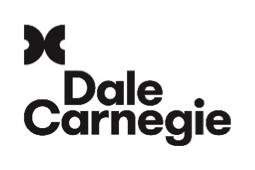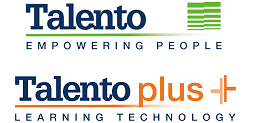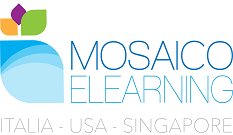Sintesi
The e-learning market globally experienced significant growth during and post the COVID-19 pandemic, which accelerated its adoption due to the necessity of remote learning. As of 2020, the market was valued at $165 billion and is projected to expand at a CAGR of 14.6%, expecting to reach a size of $374 billion by 2026. Europe holds the largest share, accounting for 35% of the market in 2020. Content providers remain the dominant force, making up over half of the market share. In Italy, the e-learning market has seen rapid growth, accounting for 8% of the European market with an estimated value of 4 billion euros. The pandemic's impact was significant, with a substantial increase in the utilization of online platforms by teachers and students, and a marked rise in the search interest for 'e-learning' during the lockdown periods. Despite these advances, Italy still faces challenges such as inadequate internet connectivity in 25% of households and a large proportion lacking technical competencies, potentially restraining full market exploitation. E-learning for educational purposes is the most considerable segment, yet infrastructure in schools is not optimal, and the preparedness of students and teachers for digital education is lacking..Title: The Thriving Italian E-learning Market: Trends and Opportunities Amidst Digital Transformation Over recent years, the Italian e-learning market has witnessed a significant transformation, predominantly fueled by the global shift towards digital technologies and the unprecedented circumstances brought about by the COVID-19 pandemic. This upward trend is characterized by a substantial evolution in demand, mirrored in the market's growth from an estimated 600 million euros in 2004 to roughly 4 billion euros in 2020. Indicative of its potential, the e-learning methodology is gradually replacing traditional frontal lessons, catering to a burgeoning audience of both the youth and adults seeking flexible educational solutions. Upon delving into the global e-learning landscape, it's evident that the market, valued at approximately 165 billion dollars in 2020, is projected to burgeon to somewhere between 350 and 400 billion dollars by 2026, growing at a CAGR of about 14.6%. Europe commands the largest share, with roughly a third of the global market, and Italy contributing about 8% to the European context. The demand for e-learning in Italy hinges on three pillars: Internet connectivity, device ownership, and technical competencies. Despite challenges such as a quarter of Italian households lacking Internet access and over a third without a tablet or computer, the landscape is gradually improving. Schools demonstrate a high level of internet access, at about 97%, although the spread of high-speed fiber-optic Internet is far less pervasive. Educational purposes dominate the e-learning market, claiming over half the total revenue. The rapid transition to online education during the pandemic has remodeled not only the instructional approaches but also attitudes towards virtual learning. As a result, a significant majority of students have experienced a total shift in their learning methodologies, embracing digital solutions, with apps and video resources becoming integral to their education. The benefits of e-learning are not to be understated— ranging from substantial time and cost savings to unlimited access to a rich diversity of courses. E-learning offerings in Italy encompass an expansive gamut, with over 200 online training courses, eclipsing many European counterparts. Though not without its setbacks— ranging from technical issues to data security concerns— the Italian e-learning market is ripe with opportunities, underscored by a collective shift in perspective that champions distance learning as a viable, sustainable, and often preferred mode of education. The emergent nature and capacity of e-learning in Italy are indicative of a market at a pivotal juncture, one that appears set for continued growth and innovation in the years.### Prominent Figures in the E-Learning Landscape As we delve into the realm of e-learning, it's essential to recognize the main players that shape this burgeoning market. Each entity, with its unique offerings and specialized focus, collectively contributes to the expansive tapestry of digital learning. **Universities Embracing Digital Evolution**: Notable Italian universities, such as Luiss, Bocconi, Politecnico di Milano, Sapienza, and IULM, have decisively stepped into the e-learning domain. They offer an assortment of online courses that not only facilitate learning from the comfort of one's abode but also provide valuable certifications. This assortment of established educational institutions has broadened the accessibility of quality education, thereby fortifying Italy's academic landscape. **Technology-Driven Educational Platforms**: These digital powerhouses serve as aggregators and facilitators, where an array of training courses from various providers are collated for ease of access. Furthermore, they empower users to create bespoke educational experiences tailored to specific organizational or individual needs. This segment has witnessed a proliferation of service providers who specialize in either content production or distribution, with some adeptly navigating both waters. **Corporate and Institutional Content Providers**: Companies and institutional bodies have also ventured into curating educational content. This material, aimed at enhancing employee skill sets or being made available to the wider public, can often be found on training platforms or directly hosted on the organizations' websites. **Applications that Teach and Train**: The mobile application segment has witnessed a remarkable increase in players who focus on specialized areas such as language learning, serious gaming, or general knowledge sharing. These apps often leverage the appeal of fast and convenient learning, tapping into the modern penchant for absorbing knowledge on-the-go. **The Pioneering Role of Individuals**: Lastly, individuals – the end-users – complete the e-learning ecosystem. From students to lifelong learners, they are at the receiving end of the market that caters to an assortment of pedagogical preferences, skill levels, and time commitments. Together, these main players underline the diversity and adaptability of the e-learning market. Whether catering to academic institutions, corporate environments, or solo learners, each has played a pivotal role in the expansion and sustenance of e-learning as a viable alternative and supplement to traditional educational methods.
per comprendere questo mercato
Dettaglio del contenuto
 Informazioni
Informazioni
- Pagine : 30 pags
- Formato : Versione PDF e digitale
- Ultimo aggiornamento : 25/04/2021
 Riepilogo ed estratti
Riepilogo ed estratti
1 Market summary
1.1 Definition and presentation
E-learning, or digital learning, is a learning method based on online learning resources and content. E-learning is used in personal and/or professional training contexts.
There are three main categories of e-learning:
- MOOCs (Massive Online Open Courses) are generally free open access courses, at the end of which the public can obtain certification.
- SPOCs (Small Private Online Courses) are similar to MOOCs but have a fee, indeed their access is limited to specific users, such as university students. They can also be used to obtain certification.
- COOCs (Corporate Open Online Courses) are used by companies to train employees and collaborators.
E-learning is linked to the vocational training and education sectors. The methodology democratizes access to training, because it allows flexibility in education, and access to all users with an Internet connection, regardless of their location.
In Italy, e-learning is expanding, with a progressive shift away from the mentality of frontal lessons alone. An increasing number of companies and universities are incorporating this organizational model into their offer, following the growing demand of both young and adult people.
The COVID-19 pandemic had important ramifications on this market sending millions of students and employees to study and work from home for an extended period of time while demonstrating the e-learning was a viable and sustainable way to conduct didactic sessions. This shift in outlook from companies, schools, and universities is expected to boost the market in the coming years.
1.2 The global market
In **** the global e-learning market was valued at *** billion dollars. This market is expected to grow at a compound annual growth rate (***) of **.*% to reach a size of *** billion dollars by ****.
Global e-learning market World, ****-****, in billions of dollars Source: ****
The COVID-** pandemic has created massive potential and opportunity in ...
1.3 The Italian market
As mentioned above, Europe is the world's largest market for e-learning, accounting for **% of its share in **** for a total of ** billion buros. Italy is estimated to count for *% of the European market giving it an estimated value of * billion euros. This market has been growing at an incredibly fast pace. ...
1.4 The Impact of COVID-19
The COVID-** pandemic and the resulting lockdowns hurt many economic sectors. Understandably, the e-learning market is one that benefited. With offices and schools closed all types of activity, instruction and work had to be done online.
As a consequence of this, from March **** until the end of the school year **% of ...
2 Demand analysis
2.1 Determinants of demand
There are three major factors that are crucial to e-learning: Internet connectivity, ownership of a device, and technical competencies.
Internet connectivity
In ****, almost a quarter of Italian households did not have Internet access. This placed Italy fourth-to-last in the OECD's ranking for internet connectivity, only ahead of Greece, Mexico, and Turkey ...
2.2 E-learning for educational purposes
As mentioned above, e-learning for educational purposes is the biggest segment of the e-learning market, accounting for **% of the total revenue of this market.
Before the COVID-** pandemic e-learning and the use of e-learning methods and strategies often took place directly in schools and universities, rather than at home. Therefore, it ...
2.3 The effects of the pandemic on opinions on e-learning
The COVID-** pandemic resulted in schools and offices shutting down. This gave way to a forced mass experiment on the use of e-learning methods. A study conducted by AlmaDiploma revealed the opinions of students on distance learning, which employed these methods. Opinions were gauged on subjects such as work loads, grading ...
2.4 Evaluation of e-learning/distance learning by geographic macro area
As mentioned above, the pandemic gave way to an experiment for forced mass e-learning/distance learning. Schools are the biggest consumers of e-learning materials and methods. It is interesting to analyse the evaluation of distance/e-learning in schools based on four geographic macro areas of Italy:
Northeast Northwest Centre South & ...
2.5 E-learning in the public administration
Public administrations are broken down in terms of national, regional, or municipal administrations. Municipal administrations and offices in Italy use e-learning systems and courses towards the training of their employees. The region in which the highest proportion of municipal offices use e-learning to train their employees is Trentino, at almost **%, while ...
3 Market structure
3.1 Production and distribution of e-learning
The world of e-learning content sees two distinct areas:
*) E-learning production: with courses and materials produced for a greater audience. These are catalogues that companies and schools can purchase and insert into their own e-learning platforms or have their students and staff use using the producers' platform. This is the ...
3.2 Different market players
Schools/universities
The first institutions to offer fully online training are American universities, notably via MOOCs, Massive Open Online Courses. These courses are accessible directly on the websites of the schools/universities, or directly in private access to their students when it comes to personalized content
In Italy universities such as ...
3.3 Advantages & disadvantages of e-learning
Advantages
It has been calculated that e-learning allows a time saving of between **% and **% compared to normal physical lessons, which often require transfers over medium and long distances and consequent waiting time due to traffic or means of transport. Consequently, in economic terms, distance learning is also a significant advantage, since ...
4 Analysis of the offer
4.1 Courses on offer
In Italy, there are *** online didactic training courses on offer, twice as many as in France and four times as many as in Greece, figures which bode well and which place Italy within the European average, alongside the German offer of *** courses and the Spanish offer of ***.
The subjects most in-demand ...
4.2 Prices and production costs
The price of e-learning courses can vary enormously, from a free video to a tailor-made course ordered by a large company.
In the educational environment, when schools, colleges, and high schools integrate e-learning activities into their curricula, this does not generate additional costs for parents.
Academic environment
Concerning e-learning offered by ...
4.3 New trends in e-learning
Measurability
Training is no longer being considered unrelated to corporate objectives. The tools for evaluating it and measuring its actual impact on the business are already very important today and will become increasingly important in the coming years.
*G
*G will consolidate what is already happening with *G, i.e. ...
5 Rules and regulations
5.1 Regulations
The training of workers on safety and health at work through the "e-learning" methodology is regulated by the State-Regions Agreement of ** December ****. The Agreement defines the criteria and conditions that allow the use of this methodology and indicates for which courses its use is permitted.
The State-Regions Agreement of * July **** (***), defines ...
6 Positioning of the actors
6.1 Segmentation
- Coursera
- Dale Carnegie
- OpenClassrooms
- COORPACADEMY
- Docebo
- Preply
- E-hippocrates
- Viteco SRL
- Talento
- Mosaico E-learning
Tutti i nostri studi sono disponibili online e in PDF
Ti invitiamo a consultare un esempio del nostro lavoro di studio su altri mercato!
Aziende citate in questo studio
Questo studio contiene un panorama completo di società di mercato con le ultime cifre e le notizie di ogni azienda :
 Perché Scegliere Questo Studio :
Perché Scegliere Questo Studio :
Accedi a più di 35 ore di lavoro
I nostri studi sono il risultato di oltre 35 ore di ricerca e analisi. L'uso dei nostri studi ti consente di dedicare più tempo e aggiungere valore ai tuoi progetti.
Approfitta di 6 anni di esperienza e oltre 1.500 studi settoriali già prodotti
La nostra competenza ci consente di produrre studi completi in tutti i settori, inclusi i mercati di nicchia o emergenti.
Il nostro know-how e la nostra metodologia ci consentono di produrre studi con un valore unico di denaro
Accedi a diverse migliaia di articoli e dati a pagamento
BusinessCoot ha accesso all'intera stampa economica a pagamento e ai database esclusivi per svolgere studi di mercato (+ 30.000 articoli privati e fonti).
Al fine di arricchire i nostri studi, i nostri analisti utilizzano anche indicatori Web (semrush, tendenze, ecc.) Per identificare le tendenze in un mercato e strategie aziendali. (Consulta le nostre fonti a pagamento)
Supporto garantito dopo l'acquisto
Una squadra dedicata al servizio post-vendita, per garantirti un alto livello di soddisfazione. +39 380 247 7810
Un formato digitale progettato per i nostri utenti
Accedi a un PDF ma anche una versione digitale per i nostri clienti. Questa versione consente di accedere a fonti, dati in formato Excel e grafica. Il contenuto dello studio può quindi essere facilmente recuperato e adattato per i tuoi supporti.
 Le nostre offerte :
Le nostre offerte :
the e-learning and MOOCs market | Italy
- Quali sono i dati relativi alle dimensioni e alla crescita del mercato?
- Cosa sta influenzando l'andamento e l'evoluzione del mercato?
- Qual'è il posizionamento degli attori di mercato?
- Segmentazione e profilo delle aziende operanti nel mercato
- Dati e numeri da una molteplicità di fonti
Pacchetto di 5 studi (-15%) IT Italy
- 5 rapporti a 75,6 € IVA esclusa per studio da scegliere dal nostro catalogo italiano per 12 mesi
- Risparmiare il 15% sugli studi aggiuntivi acquistati
- Scegliere il rimborso del credito non utilizzato al termine dei 12 mesi (durata del pacchetto).
Consulta i termini e le condizioni del pack e del rimborso del credito non utilizzato.



























